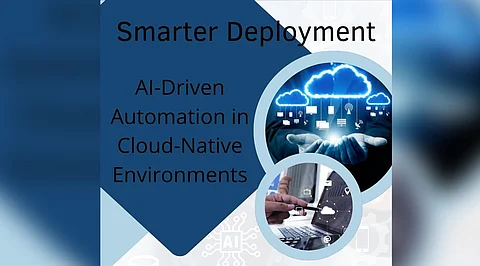

In this era of dynamic cloud-native advancements, deployment practices are being transformed through innovative strategies. Sekhar Chittala's research focuses on the integration of Kubernetes' advanced orchestration with artificial intelligence (AI), redefining release automation to be smarter and more efficient. By tackling the complexities of distributed systems, his work paves the way for enhanced scalability, improved reliability, and streamlined operations, offering a glimpse into the future of modern software deployment.
Cloud-native architectures thrive on three pillars: containerization, orchestration, and microservices. These features empower organizations to build scalable, adaptable applications that cater to dynamic environments. Yet, traditional release strategies fall short in such complex setups. Challenges like configuration drift, environment inconsistencies, and scalability limitations often hinder operational efficiency. Here, release automation proves its worth, offering consistent deployments through practices like Continuous Integration/Continuous Deployment (CI/CD), Infrastructure as Code (IaC), and immutable infrastructure management.
Kubernetes has become a foundational element in deployment automation, offering a robust and extensible architecture designed to manage the complexities of modern distributed systems. Its architecture, comprising a centralized control plane and worker nodes, simplifies the orchestration of containerized applications. Key components like Pods, Deployments, and ConfigMaps provide declarative methods to define application states, enabling seamless updates and scaling. Features such as the Horizontal Pod Autoscaler (HPA) dynamically adjust resources to meet varying workloads, while rolling updates and rollbacks ensure uninterrupted application availability during transitions. Together, these tools and functionalities position Kubernetes as an indispensable platform for efficient, scalable, and resilient application deployment.
Artificial intelligence augments Kubernetes by introducing predictive and adaptive capabilities to deployment processes. From anomaly detection to resource optimization, AI enhances the entire lifecycle of software deployment. Predictive scaling models leverage historical data to forecast resource needs, minimizing underutilization and downtime. AI-driven anomaly detection quickly identifies irregularities, enabling proactive issue resolution and reducing system disruptions.
Another important and successful application of AI is performance optimization. Through predictions controlling parameters and frequently analyzing metrics, AI helps to achieve the best result for an application as well as infrastructure. Similarly, other such tools or ML pipelines such as TensorFlow Extended (TFX) help improve the efficiency of activities involving model training validation, deployment, and more.
In automated settings, observability is imperative and it does not refer to just one discipline. Other tools such as Prometheus and Grafana enable one to conclude how the system is performing. Its important performance measures for the system and application are the CPU loads, network performance, and specific application error rates which help teams identify problem areas and ensure the system is dependable. With AI-enabled monitoring, organizations can transition from always responding to problems to anticipating them, therefore avoiding them.
The overall space regarding release automation is changing dynamically depending on such trends as serverless and edge environments. The serverless approach does help in the management of the application since the basic infrastructure and scalability are not a relevant factor and the application can even be made to scale at the level of a function. While, on the other hand, edge computing distributes applications closer to users, which minimizes the time for response and fulfils the compliance standards of the distributed systems.
An interesting trend is the active use of AI in predictive deployment optimization. The use of advanced algorithms has reduced the role of man in determining resources to allocate, in canary analysis or in making the rollback decision. The trends mentioned above combined with the tools which are yet to gain popularity such as service mesh improvements and policy-as-code approaches are already raising the new bar for automated processes.
Implementing successful release automation strategies requires adherence to best practices:
1. Infrastructure as Code (IaC): Define environments using declarative configurations for consistency.
2. Security Integration: Automate image scanning, secret management, and role-based access controls.
3. Testing Strategies: Include chaos engineering and end-to-end testing to ensure system resilience.
4. Disaster Recovery Plans: Regularly back up critical data and prepare for multi-region deployments to maintain continuity.
These principles help organizations achieve secure, scalable, and resilient automation workflows.
In conclusion, Sekhar Chittala's research highlights a transformative shift in cloud-native deployment practices, showcasing the immense potential of AI-enhanced release automation. By combining Kubernetes' orchestration capabilities with cutting-edge AI tools, organizations can unlock new levels of scalability, reliability, and operational efficiency. As advancements in edge computing, serverless architectures, and predictive analytics continue to shape the automation landscape, his work serves as a valuable guide for leveraging these innovations, enabling businesses to remain agile and competitive in an ever-evolving digital world.
